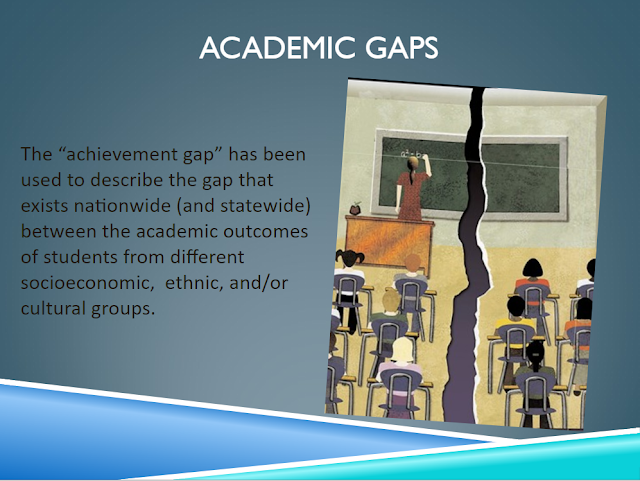What Causes the Black-White, Poor-Rich Gaps in Basic Education?
In the United States, gaps are obvious in public school education on a variety of measures. On average, Blacks score lower in standardized tests. With regard to school suspensions, Blacks receive a lot more than Whites do. In gifted programs, Blacks are underrepresented. Blacks are also more likely be retained in a grade than Whites do. On the other hand, white students are more likely to be enrolled in advanced courses than Black students. The same gaps appear between children of low- and high-income families. Thus, it is convenient to blame out-of-school factors for these gaps since correlations between gaps and race, and between gaps and socio-economic status, are fairly strong. It is sadly a convenient excuse. By scratching deeper into data, researchers have found that most of these gaps are actually products of our discretion. This is the conclusion made by Kenneth Shores, Ha Eun Kim, and Mela Still in a paper to be published in the American Educational Research Journal. We are responsible for these gaps for the simple reason that we discriminate.
Correlations often do not provide a clear cause-effect relationship especially when multiple factors are in play. Gaps in test scores strongly correlate with race and family income.
Focusing on test scores can indeed hide what is truly underneath the gaps in basic education because race and family income can in fact explain the majority of the variance in test scores. However, if one pays attention to gaps outside test scores, like suspension rates, enrollment in advanced courses, giftedness, grade retention, and other categories that we ourselves have invented, race and socio-economic stats can no longer account for the gaps. The following table copied from the paper by Shores and coworkers shows this convincingly:
The above was obtained by analyzing data from more than 1800 school districts across the United States. Race can explain 71% of the differences in test scores, but can only explain about a third of in-school suspensions (ISS). The authors rightly conclude:
Correlations often do not provide a clear cause-effect relationship especially when multiple factors are in play. Gaps in test scores strongly correlate with race and family income.
 |
| Above copied from Denise Daniels, Engaged Families = Successful Students |
Focusing on test scores can indeed hide what is truly underneath the gaps in basic education because race and family income can in fact explain the majority of the variance in test scores. However, if one pays attention to gaps outside test scores, like suspension rates, enrollment in advanced courses, giftedness, grade retention, and other categories that we ourselves have invented, race and socio-economic stats can no longer account for the gaps. The following table copied from the paper by Shores and coworkers shows this convincingly:
 |
| Above copied from Shores, K., Kim, H. E., & Still, M. (2020). Categorical Inequality in Black and White: Linking Disproportionality Across Multiple Educational Outcomes. American Educational Research Journal. https://doi.org/10.3102/0002831219900128 |
The above was obtained by analyzing data from more than 1800 school districts across the United States. Race can explain 71% of the differences in test scores, but can only explain about a third of in-school suspensions (ISS). The authors rightly conclude:
We have argued that conventional research methods that explain racial disparities in categorical inequalities as a function of in- and out-of-school factors are inappropriate, as categorical inequalities are the consequence of decisions made by school personnel. Researchers, therefore, should limit their explanations to in-school factors, or at least provide justification for the use of out-of-school factors in these explanatory models. Policymakers and practitioners can also conclude that the onus is on them to remedy these disparities.Gaps created by our own discretion can be easily addressed. We should quit labeling our students. We should provide academic opportunities to all and stop sorting students. We should exercise positive intervention and be more lenient in our school's disciplinary actions. We need to stop discrimination in our schools.
Comments
Post a Comment